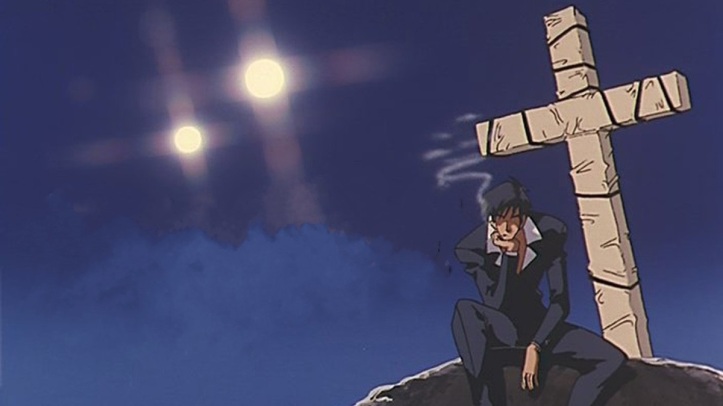
Why should Christians learn from mangaka, or manga creators, for new material? I think it is obvious that the usual methods are not helping Christian fiction in the market.
Christian creativity is often lampooned for its overemphasis on spiritual themes and its family-friendly take on the world. Some authors, like Frank Peretti, managed to subvert this, but it often seems that the Christian fiction section of bookstores is packed with saccharine.
Perhaps, it is not so much the authors, but who they choose to emulate in style. A lot of Christian writers seem to take notes and tropes from Chicken Soup For The Soul, which produces those sort of heartwarming, but repetitive story arcs.
A few Christian authors have suggested taking inspiration in style from secular writers. You can see how that works. I have read faith-based fiction that you could compare to Stephen King, John Grisham, and Joyce Carol Oates. Nothing wrong with grafting onto a particular style, but it has done nothing to make Christian fiction unique.
Perhaps it is time that Christian authors, artists, comic book writers, filmmakers, and other creators look to Japan for new stylistic approaches.
Manga and anime, the vibrant world of Japanese comics and cartoons, has transcended borders and captivated readers worldwide. Its enthralling narratives, unique characters, dynamic art, and themes offer a wealth of inspiration for American Christian authors and artists. Understanding the manga creation process, its market success, and its storytelling techniques can unlock new avenues for creative expression and audience engagement.
You might be thinking, “hey didn’t Christians denounce anime and manga in the nineties and early in the twenty-first century?” Yes, and that was very shortsighted of them. Manga and anime are styles, not genres. Are there reprehensible titles and creators? Absolutely, but a whole style should not be condemned because of that.
Unlike American comics, where writers and artists often collaborate, manga creation is typically a solo endeavor. “Mangaka,” as creators are called, shoulder the responsibility of both writing and illustrating their stories, though they can get a staff or collaborator later down the road. This fosters a unique creative vision, where narrative and visuals intertwine seamlessly.
The process itself is meticulous, involving detailed storyboarding, precise paneling, and dynamic character design. This dedication to visual storytelling translates to a reading experience unlike any other, where every panel is infused with meaning and emotion.
The manga market thrives on both excellence and accessibility. From action-packed shonen to introspective seinen, there’s a genre for everyone. This vast range caters to a passionate global audience, constantly seeking fresh content.
Additionally, the rise of digital platforms has made manga more accessible than ever, removing geographical barriers and allowing creators to reach a wider audience. This dynamic market presents a valuable opportunity for faith-based authors and artists to explore new narratives and connect with a potential fanbase.
Many key factors contribute to the success of manga. High-stakes storytelling keeps readers engaged, often placing characters in seemingly insurmountable challenges. Compelling character development fosters emotional investment, making readers care deeply about the protagonists’ journeys. Unique art styles visually enhance the narrative, adding another layer of depth and nuance.
Furthermore, manga often tackles complex themes such as social commentary and philosophical inquiry, resonating with readers on a deeper level. Imagine if a Christian writer picked up on this, adding Biblical themes to such stories without the saccharine.
By understanding the manga creation process, market dynamics, and storytelling techniques, American authors and artists can unlock new creative pathways. By incorporating these lessons while staying true to their own unique voices, they can create compelling stories that resonate with audiences worldwide, bridging the gap between cultures and enriching the world of storytelling.
Keep in mind that this is just a starting point. Further research into specific manga creators, genres, and market trends will provide deeper insights and inspire even more creative exploration. The world of manga awaits a treasure trove of knowledge and inspiration for those willing to delve into its vibrant pages.
Even if you are not interested in picking up one yourself, Christian creatives can learn many new skills by following along. Mangaka and anime directors have done many interviews that are readily available where they discuss how they learn, giving you a link to this knowledge.
What do you think? Let me know in the comments below. Tell me if there is a comic book, movie, anime, or novel you would like me to review. While you are at it, check out my article on how the Girl Boss is overused in Hollywood. Don’t forget to like, share, and subscribe for more posts like this one.
Connect with me on social media. You can support StudioJake on Locals.

[…] movie, anime, or novel you would like me to review. While you are at it, check out my article: Christian Creators Should Learn From Manga And Anime. Don’t forget to like, share, and subscribe for more posts like this […]